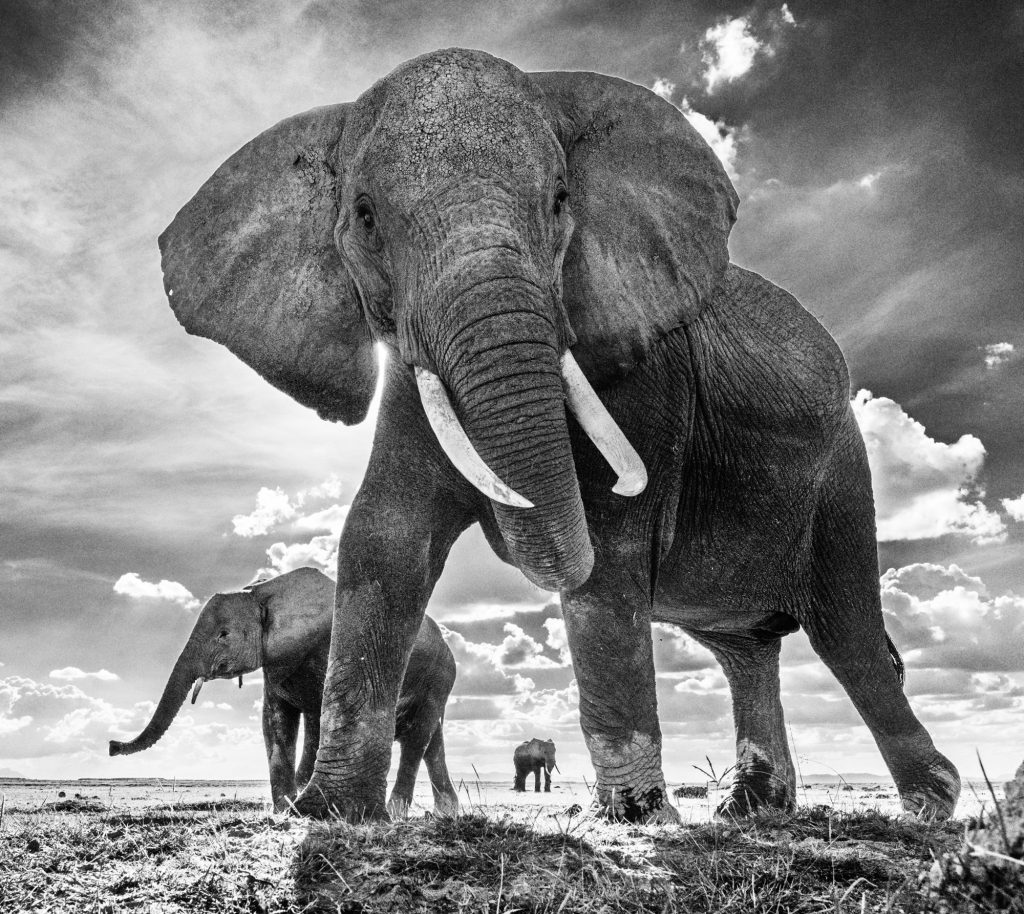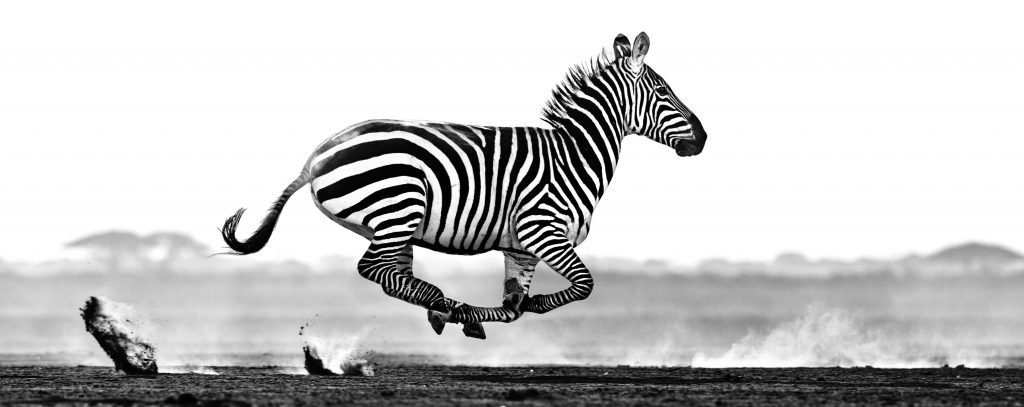
Evocative and Immersive
By Dave Gordon
When he was twenty years old, in 1986, David Yarrow snapped the now-famous London Times photograph of Diego Maradona holding the FIFA World Cup in Mexico City. It was the harbinger of what was to become a multi-decade stellar career as one of the foremost living fine art photographers. Yarrow’s evocative photography has earned him a following among art collectors, and placed him as a regular feature at established art fairs and galleries.
In recent years, he has set price records for photos.
At the Sotheby’s photography auction in London in May 2017, Yarrow’s iconic image from South Sudan, “Mankind” sold for $75,000. In April of 2018 “The Wolf of Main Street” – with a real wolf standing on a bar table– sold for $100,000. And in December 2019, “The Wolves of Wall Street,” a depiction of the partying elite business class, sold for $200,000. Even the casual observer will note that whether it’s wolves, or other beasts of the wild, Yarrow’s signature work involves peering face to face with some of the Earth’s most exotic creatures.
“The hardest animals to shoot well are the most dangerous and the most scarce, so that would probably be the polar bear and the tiger,” he explained. “They both have their own issues in terms of photographing them, and because they are not that common, you get a visceral rush when you see them. I think the big tusk elephants – there’s probably only about 19 left in the world – when you come face to face with them, that’s probably my most exciting.”

The Untouchables
As much dedicated to immortalizing animals on film as he is to saving them, in 2016, the royalties from his book Wild Encounters were donated to Tusk, the British NGO focusing on African animal conservation. “Tusk has relationships (in Africa) that are two or three generations long, and that helps,” he said, noting the importance of funds being trusted to go where they need to go.
“But if you had to pick out the two animals that we are most concerned about, it would be the lion – we do a lot of work for lion conservation – and then elephant conservation,” he said. The book received major endorsements: a foreword written by The Duke of Cambridge (Prince William), and was awarded Art Book of 2017 by Amazon.
After Wild Encounters he followed up with the 2019 photography book, David Yarrow, with royalties again donated to Tusk, and WildAid in the US. Showcasing 150 eye-popping images, it features a foreword written by NFL star Tom Brady and an afterword by American supermodel Cindy Crawford.
Suffice it to say, being in the field to set up a shot with the unpredictable nature of nature, is one of the job’s toughest challenges. “We had a shoot in Botswana. It was a complicated shoot, it was a nice shoot, but the previous night a hundred elephants showed up in this watering hole. And we’d been told that happened for the previous five nights – so we spent the day preparing, then when it came to the night not one elephant turned up. There’s not much you can do about that.” But even with a hundred elephants showing up, the task isn’t anymore to grab a snapshot in time. The goal is to be relentlessly compelling, since in recent years, people have become insatiable consumers of images. “We are the most visually content generation that ever lived. This is true of the moving picture as well as the still picture. We are visually spoiled and are more discerning than we used to be. For what I do, I have to try five times as hard,” he lamented. “I think, to put more interesting stuff in now is a high bar, because everyone has seen everything. So, our threshold for what is mundane is much higher than what it was.”

Desert Flight
Mobile devices have changed everything. “I think Instagram has made photography go from a peripheral art, to a mainstream art. It is the most relevant art form for our children, and therefore for us all,” he notes. “For photographers, what has happened is like what Dickens says in A Tale of Two Cities, ‘It’s the best of times and the worst of times.’ It is the best of times in the fact that the medium is totally recognized and appreciated. It is the worst of times in that there is a plurality of content.”
With decades behind the camera, and hundreds – if not thousands – of subjects represented in his art, the question must be asked: which is his favourite? “I think the best answer to that is, ‘I haven’t taken it yet,’” he noted. “I think you always have to have a mentality that your best work you haven’t done yet. If I thought that the best picture I took about eight weeks ago was never going to be bettered, that’s a miserable way to wake up everyday.”



